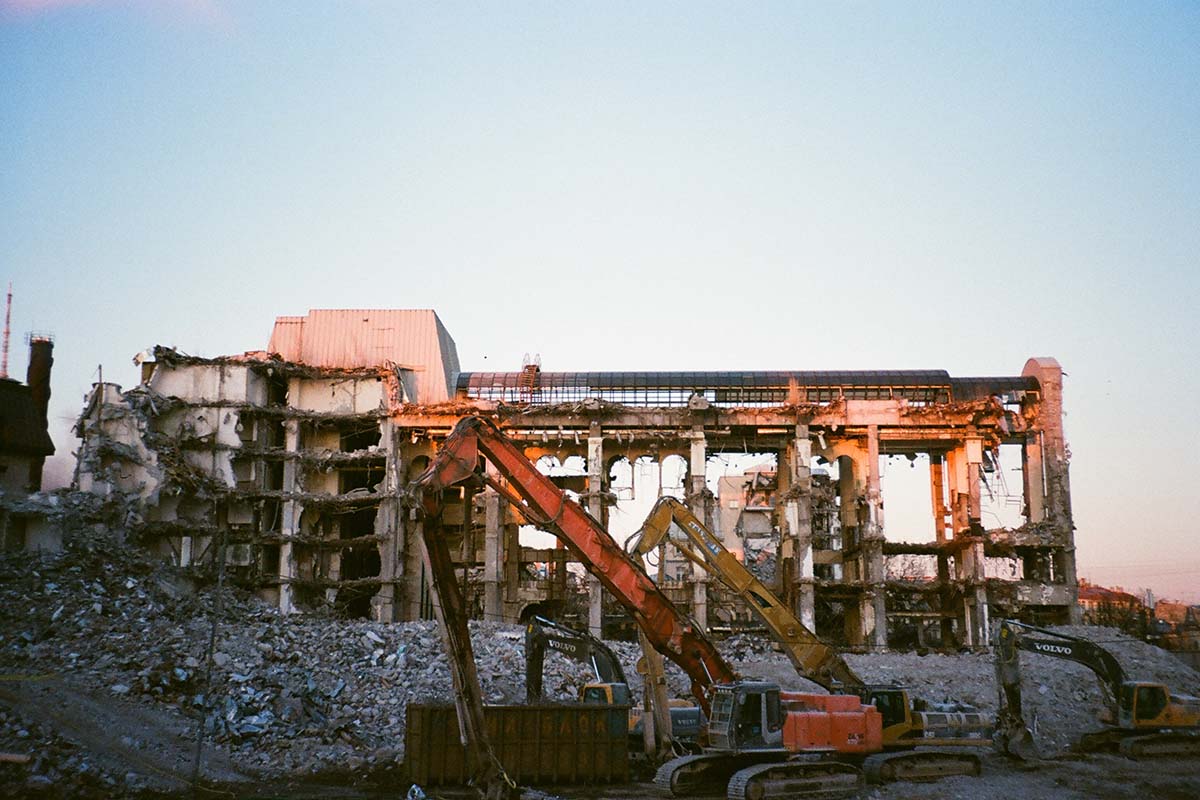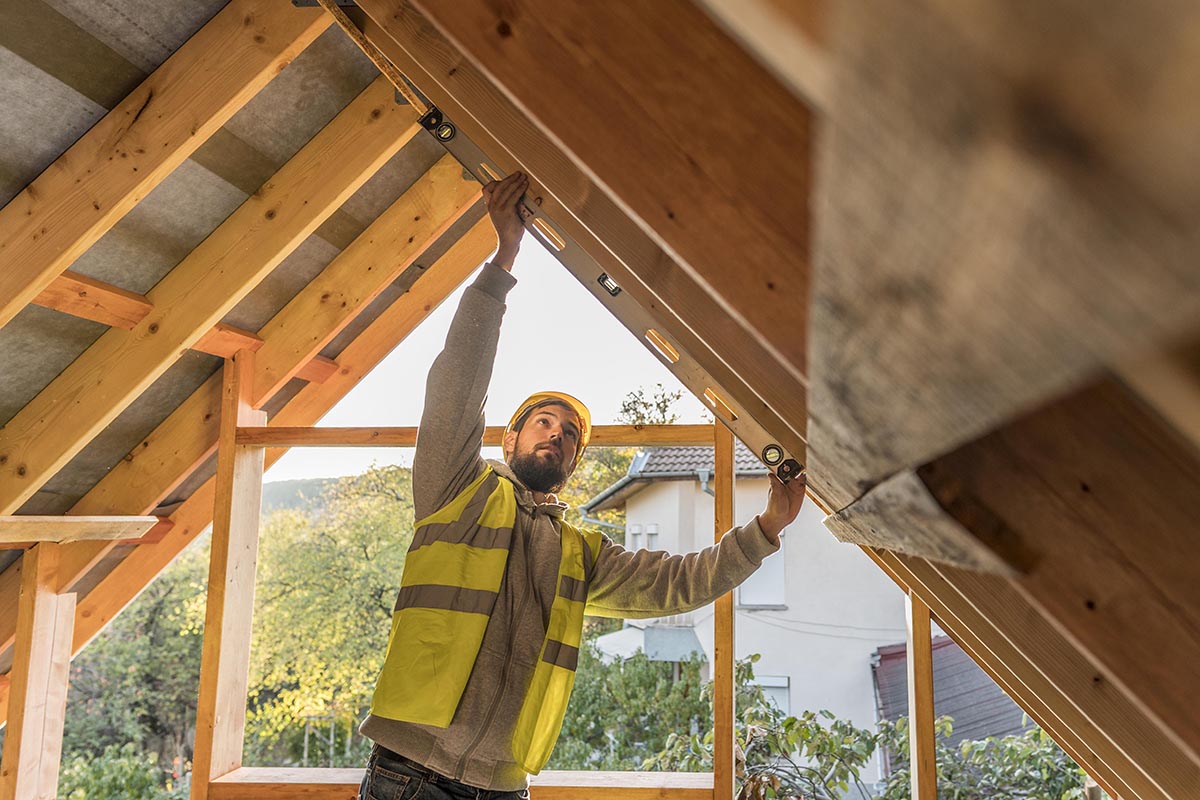Mitigating Environmental Impact in Large-Scale Deconstruction
Key Points
- Recycling and Reusing Materials: Repurposing materials like steel, wood, and concrete reduces waste, lowers costs, and benefits the environment.
- Eco-Friendly Equipment and Waste Disposal: Using green technology and proper waste disposal minimizes emissions and reduces the carbon footprint.
- Effective Planning and Design: Designing for easier deconstruction saves resources, reduces environmental impact, and supports sustainable future projects.
Deconstruction, particularly on a large scale, often carries significant environmental implications.
From the release of greenhouse gases to the disposal of construction waste, these processes can profoundly impact our planet.
Nevertheless, there’s growing awareness and adoption of methods to mitigate this environmental impact.
These strategies range from recycling building materials to leveraging more eco-friendly construction techniques.
This document aims to explore these tactics in-depth, providing an insightful and comprehensive understanding of how to reduce the environmental footprint of large-scale deconstruction.
Innovative solutions like those offered can play a pivotal role in mitigating environmental impact during large-scale deconstruction projects.
Their specialized waste disposal services and sustainable practices contribute to reducing the carbon footprint of such projects, aligning with the global effort to promote eco-friendly construction and demolition practices.
Recycling and Reusing Materials
Often, large-scale deconstruction projects generate reusable materials such as steel, wood, concrete, and bricks. Recycling and reusing these materials can significantly lessen the environmental impact.
For instance, recycled wood and steel can be used for new construction projects.
Low-grade waste materials such as asphalt shingles may be crushed and remolded into road material.
Furthermore, deconstruction activities can produce reclaimed brick or stone that can be cleaned and reused in other building projects.
Reusing these materials is not only beneficial from an environmental point of view, but it also represents an economic opportunity as well.
Green Demolition
Also known as deconstruction, green demolition involves carefully dismantling buildings to minimize waste and salvage reusable materials.
Now, green destruction is more of a term used to describe a goal rather than a specific process.
This is because the methods applied will vary from project to project. For instance, one strategy may be to strip buildings of fixtures and windows before demolishing the structure.
In parallel, a deconstruction team may also sort and remove reusable materials such as steel and bricks.
Hiring commercial demolition solutions experts can provide you with the best way to mitigate the environmental impact of deconstruction.
On the other hand, inexperienced professionals can often lead to a need for extra materials, more waste created, or both.
Eco-friendly Construction Equipment
Using construction equipment that runs on renewable energy sources or emits fewer pollutants can drastically cut the environmental footprint of large-scale deconstruction.
Many deconstruction companies, for instance, use electric jackhammers and other eco-friendly equipment to minimize their environmental impact.
In addition, investing in more energy-efficient construction tools may require an initial capital expenditure but could help reduce operating costs in the long run.
Moreover, efficient machines often have a longer service life, resulting in fewer replacement costs. They also require fewer resources to manufacture and produce, making them more cost-effective in the long run.
Proper Waste Disposal
Ensuring that waste is disposed of in eco-friendly ways, such as using construction and demolition recycling facilities, can prevent harmful materials from ending up in landfills.
In the pursuit of mitigating environmental impact during large-scale deconstruction projects, innovative solutions like those offered by Primedumpster.com can play a pivotal role.
Their specialized waste disposal services and sustainable practices contribute to reducing the carbon footprint of such projects, aligning with the global effort to promote eco-friendly construction and demolition practices.
Additionally, proper waste disposal practices can help reduce the amount of air and water pollution caused by decommissioned buildings.
Depending on local regulations, some building materials like concrete may be recycled and reused for other construction projects.
For instance, reusing concrete slabs can save considerable costs and reduce environmental impact. Furthermore, hazardous materials like asbestos should be removed and disposed of per applicable laws.
Dust and Noise Control
Controlling dust and noise during deconstruction reduces air and noise pollution, mitigating the overall environmental impact.
Companies should use water or a mechanism for static dust control on-site in order to minimize dust, and should also make use of noise-reducing equipment such as sound barriers to limit disruption.
Furthermore, it’s important to ensure that the demolition occurs when noise pollution will have minimal impacts on nearby residents and businesses.
Following these practices can help minimize pollution while preserving the quality of life for people living in the surrounding area. More importantly, understanding and following local regulations can help mitigate legal issues.
Planning and Designing
Effective planning before construction, including designing for deconstruction, can foresee and reduce environmental impact.
This involves designing buildings to facilitate future deconstruction and resource recovery. Doing so can help reduce the amount of energy and resources required to decommission a structure, thus reducing the environmental impact.
Having a deconstruction plan before construction may also save time and money during dismantling.
Additionally, it’s essential to ensure that any hazardous materials, such as lead or asbestos, are identified and removed safely before demolition begins.
For instance, a dangerous material survey can help identify any issues before they become problematic.
Improving Indoor Air Quality
Proper ventilation and air filtration systems can help improve indoor air quality during large-scale deconstruction. This can help reduce the amount of dust and other particles in the air, leading to a healthier living environment.
Proper ventilation systems can also help reduce the risk of indoor airborne disease transmission. Proper air filtration and ventilation systems also require less energy than conventional heating and cooling systems.
Overall, these strategies can improve air quality while reducing the environmental impact of large-scale deconstruction projects.
Due to improper ventilation, commercial buildings are often at risk of mold, mildew, and other health hazards. Installing an efficient air filtration system is key to reducing the impact of these pollutants while providing a healthier living space for occupants.
Reusing Site Topsoil
Rather than disposing of existing site topsoil or hauling in new soil, using appropriate techniques such as scarification and cut-and-fill operations can maintain the integrity of the soil.
This will help maintain the fertility of the soil, providing a better environment for future projects. Reusing existing topsoil can be more cost-effective than transporting it to another site or purchasing new soil.
Furthermore, maintaining and reusing existing topsoil can reduce erosion and runoff that could otherwise lead to water pollution. Most importantly, proper topsoil management is essential to mitigating the environmental impact of large-scale deconstruction.
Use of Natural Materials
Incorporating natural materials such as stone and wood, which have low embodied energy costs, can reduce the environmental impact of large-scale deconstruction projects.
Natural materials require fewer energy inputs and lower embodied energy costs than traditional construction materials such as steel, concrete, or bricks. Furthermore, natural materials can also be used to create more aesthetically pleasing buildings that are designed with the environment in mind.
Additionally, utilizing local materials reduces transportation costs and associated emissions while simultaneously stimulating the local economy. More importantly, using natural materials instead of synthetic materials can reduce the environmental impact of a project.
By employing these strategies, deconstruction companies can mitigate their environmental impact while providing quality services to their clients. Adopting eco-friendly practices and investing in more efficient tools will help ensure that projects are completed responsibly and cost-effectively.
Furthermore, proper planning and design is essential for reducing the overall environmental impact of large-scale deconstruction projects.
With careful consideration and implementation, companies can reduce their environmental footprint while still providing cost-effective services to their clients. Ultimately, mitigating the environmental impact of large-scale deconstruction is critical for ensuring a cleaner and healthier future for all.




















